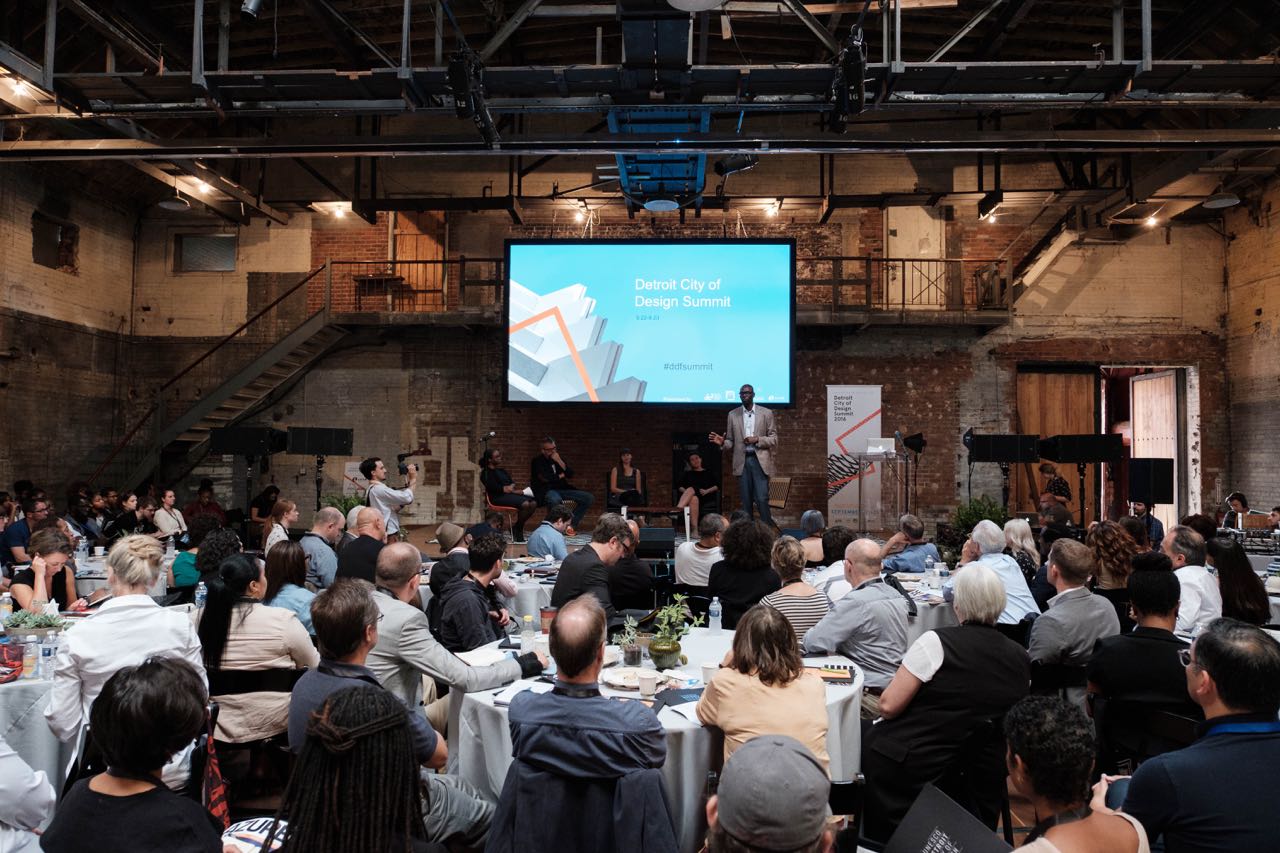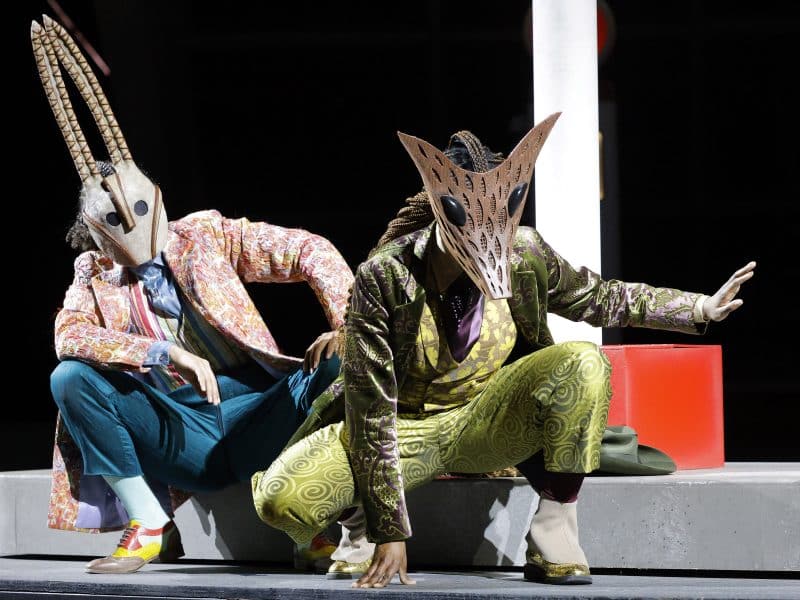Detroit Design Festival showcases city’s bright design future
The Detroit Design Festival wrapped up its third annual summit last month and, as expected, there were in-depth discussions about the power of design. But this year's iteration of the festival had special import.

But this festival had another important achievement to celebrate and reflect on.
Late in 2015, UNESCO endowed Detroit with its prestigious “City of Design” designation—the first city in the United States to receive one. Many rightly wondered about the designation’s significance. Is it just a glorified tag Detroit can add to its highway signs? Or is it something the city can harness to increase its prosperity and prestige?
This selection from UNESCO, and the questions that followed, framed the discussions that took place at the DDF from September 21 through 25.
In her opening remarks at Thursday’s assembly, Olga Stella, executive director of the Detroit Creative Corridor Center (DC3), DDF’s planning organization, said that the festival will act as a way to explore the designation. Then, over the next year, DC3 would develop themes, common goals, and “a sense of shared meaning,” which they would use to make a variety of proposals to city government and Detroit institutions.
[For more on the significance of UNESCO’s City of Design designation, check out this Model D article]
Thursday was when much of that thought-work took place, as attendees were treated to four panel discussions on themes of sustainability, equity, adaptation, and innovation. The day was meant to get attendees excited about the designation, and inform them on design in Detroit and applicable examples from around the world.
There was a lot to absorb throughout the day. But as Olga Stella hoped, several encouraging themes did emerge.
This designation is for all Detroiters
Only one of the panel’s topics was titled “equity,” but the word was on everybody’s lips.
Detroit’s planning director Maurice Cox gave the day’s first speech and much of it was about how to get the entire city involved in the designation. This inclusive approach to his job started on day one when Mayor Mike Duggan said to him, “‘I want a champion of the neighborhoods.’ That’s unusual for a mayor who’s riding a wave of downtown development,” said Cox.
A consistent tone was established during the very first presentations and following panel discussion on “sustainability.” Garlin Gilchrist, the first ever deputy technology director for Civic Community Engagement for the City of Detroit, is responsible for making city services more design-friendly, especially for people who have less experience with technology. The Improve Detroit app, which allows residents to report non-emergency problems like potholes or a broken stoplight, is one step the city has taken.
“We went service by service and asked, ‘How can we have a clear interface so people have a way to deal with non-emergency requests?'” he said. “The app delivers clarity and insight into how the process works.”
But getting all Detroiters to opt-in to these services, according to Gilchrist, will be a challenge. Many have lost faith in their government.
“We had a number of people disengage with government because they didn’t trust us, didn’t believe in police response time or trash pickup,” he said. “This administration has worked to rebuild that trust.”
Then there was Josh McManus, chief operating officer at Rock Ventures, a major investment arm of Quicken Loans, who devoted much of his speech to inequality in cities and the role corporations can play ameliorating it. “Is there a way for companies to find a balance between moral and market imperatives? How can an employer be part of stabilizing inequity in the city?”
This all took place even before the panel on “equity.” During that discussion, the audience heard a lot about equitable development practices, like the community benefits ordinance, and the detrimental effects of speculation and gentrification.
Esther Yang, currently at the City of Detroit’s Planning Department, explored the intersection of design and social justice for over three years in her prior post as the Deputy Director of the J. Max Bond Center on Design for the Just City. Her hiring is another sign that the city is concerned with reaching all its residents.
This festival demonstrated how important everyday Detroiters will be in DC3’s decision-making process.
Design is still a strength
One of the reasons Detroit received UNESCO’s designation is because of its illustrious history of design. Between automobiles and architecture, the city has had a worldwide influence on design.
But we still excel in this arena. For contemporary examples, look to Detroit-born or -based designers Michael Ford, Andre Clemons, and Anya Sirota.
Ford has worked on numerous architectural commissions and given presentations across the country on the connection between hip-hop, art, and architecture. Clemons, a senior manager at Dassault Systemes and holder of multiple design patents, spoke to students from Henry Ford Academyfor three hours during and after the lunch break.
The first panel on sustainability began with presentations that showcased some stunning examples of design, like Anya Sirota’s work with her firm Akoaki in creating the temporary gallery Interrobang installed on the rooftop of the abandoned Packard Automotive Plant.
Another of DDF’s highlights was Eastern Market After Dark, which transformed the entire market district into a celebration of design. Every shed, walkway, business, and gallery—practically every available space—was activated. There were food and goods vendors, art, drinks, a fashion show, light displays, installations, and so much more. Eastern Market, which felt like a slice of Berlin imbued with Detroit magic, came alive in a way I’d never seen before in the city.
Representatives from other “Cities of Design” were blown away by the festival and Detroit generally. “It was great hosting guests from other UNESCO cities,” says Ellen Schneider, director of Advocacy and Operations for DC3. “They talked about how friendly people in Detroit were and came away enthusiastic and inspired by their time here. They’d never been to a design festival like this before with spectacular events like Eastern Market After Dark and Light up Livernois. It made me so proud to showcase Detroit’s design community.”
Design touches everything
The reason DC3’s task is so important is because of how pervasive design is. We can use it to create “20-minute” neighborhoods, beautify our city’s skyscrapers, create apps, or solve problems like identifying malfunctioning fire hydrants.
Not only that, but great care needs to be taken in how something is designed, especially a building or city plan that can’t be easily changed. “If someone buys a toaster and doesn’t like it, they can return it. That’s not the case with built places,” said developer Peter Cummings of The Platform.
“Infrastructure is not just about moving people and water around, but it’s about who we are and our culture,” said Ryan Gravel of the firm Sixpitch, during the panel on “adaptation.”
Not surprisingly, DC3 did great work in designing the festival. There were thoughtful panels and presentations, local food and drink vendors, impeccable pacing, and wondrous non-summit events like Eastern Market After Dark.
So while DC3’s task is immense, I have no doubt that they will carry it out judiciously after experiencing this year’s Detroit Design Festival.






